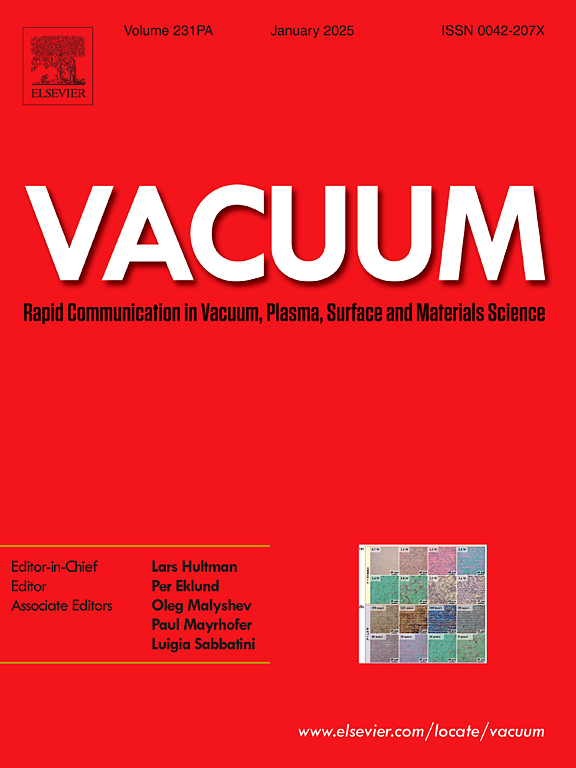真空中金晶体激光诱导的结构动力学
IF 3.8
2区 材料科学
Q2 MATERIALS SCIENCE, MULTIDISCIPLINARY
引用次数: 0
摘要
利用超快电子衍射(UED)研究了独立的≈50 nm厚的金单晶薄膜中的激光诱导过程。样品采用515 nm、入射影响≈9 mJ/cm2的fs激光脉冲抽运,并采用能量为47 keV的延时fs电子脉冲探测。采用Debye-Waller形式直接映射了晶格温度的时间依赖性。根据实验数据,估计了Au的电子-声子耦合常数,与文献数据一致。通过分析电子衍射动力学,可以可视化金中的相干剪切声振荡。提出了一种估算短激光脉冲诱导晶体熔化条件的新方法。它是基于使用低强度脉冲电子探针以非破坏性方式观察可逆结构动力学。本文章由计算机程序翻译,如有差异,请以英文原文为准。
Laser-induced structural dynamics of a gold crystal in vacuum
Ultrafast electron diffraction (UED) is used to study laser-induced processes in a free-standing ≈ 50 nm-thick film of gold single crystal. The sample is pumped by 515-nm fs laser pulses with incident fluence of ≈9 mJ/cm2 and probed by time-delayed fs electron pulses with an energy of 47 keV. The Debye-Waller formalism is used to directly map the time dependence of the crystal lattice temperature. Based on the experimental data, the electron-phonon coupling constant for Au is estimated, which is in agreement with the literature data. By analyzing the electron-diffraction kinetics, it was possible to visualize coherent shear acoustic oscillations in gold. A new methodology is presented, which allows estimating the melting conditions of crystals induced by short laser pulses. It is based on the observation of reversible structural dynamics in a non-destructive manner using a low-intensity pulsed electron probe.
求助全文
通过发布文献求助,成功后即可免费获取论文全文。
去求助
来源期刊

Vacuum
工程技术-材料科学:综合
CiteScore
6.80
自引率
17.50%
发文量
0
审稿时长
34 days
期刊介绍:
Vacuum is an international rapid publications journal with a focus on short communication. All papers are peer-reviewed, with the review process for short communication geared towards very fast turnaround times. The journal also published full research papers, thematic issues and selected papers from leading conferences.
A report in Vacuum should represent a major advance in an area that involves a controlled environment at pressures of one atmosphere or below.
The scope of the journal includes:
1. Vacuum; original developments in vacuum pumping and instrumentation, vacuum measurement, vacuum gas dynamics, gas-surface interactions, surface treatment for UHV applications and low outgassing, vacuum melting, sintering, and vacuum metrology. Technology and solutions for large-scale facilities (e.g., particle accelerators and fusion devices). New instrumentation ( e.g., detectors and electron microscopes).
2. Plasma science; advances in PVD, CVD, plasma-assisted CVD, ion sources, deposition processes and analysis.
3. Surface science; surface engineering, surface chemistry, surface analysis, crystal growth, ion-surface interactions and etching, nanometer-scale processing, surface modification.
4. Materials science; novel functional or structural materials. Metals, ceramics, and polymers. Experiments, simulations, and modelling for understanding structure-property relationships. Thin films and coatings. Nanostructures and ion implantation.
 求助内容:
求助内容: 应助结果提醒方式:
应助结果提醒方式:


